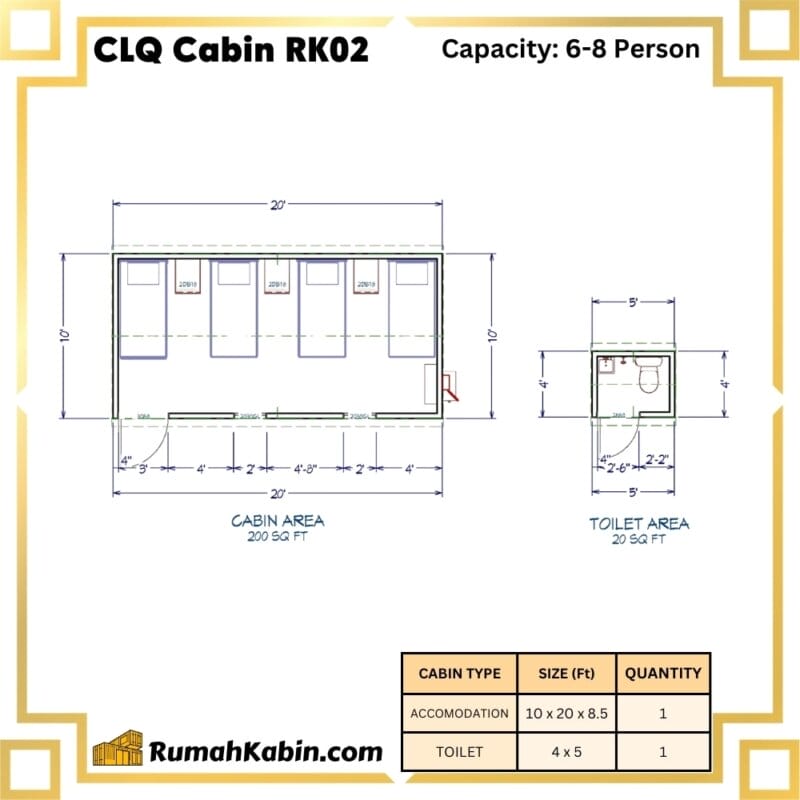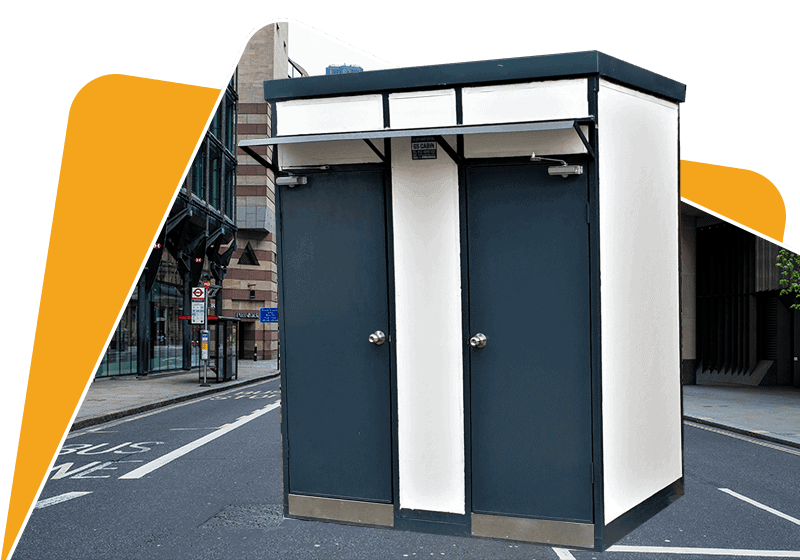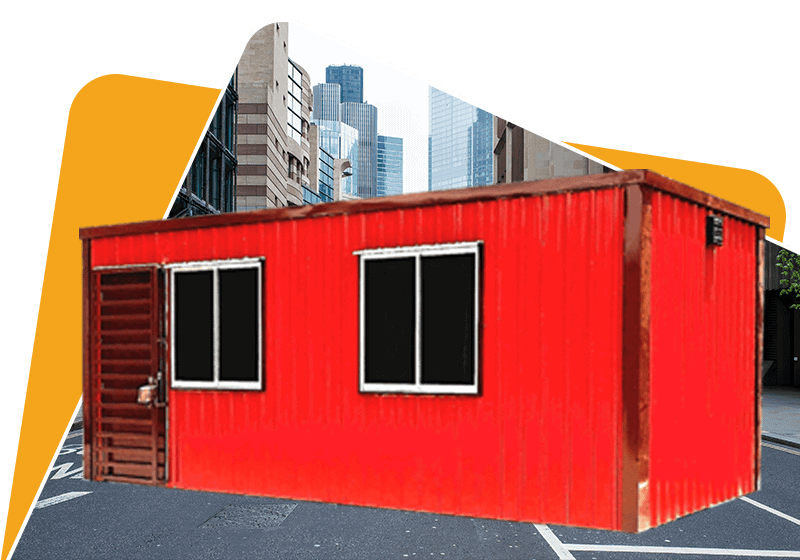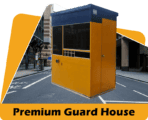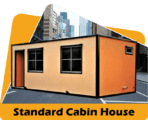
Blog
10 Popular Questions About Storage Cabin

10 Popular Questions About Storage Cabin
- What are the different types of storage cabins?
- What size storage cabin do I need?
- What features should I look for when buying a storage cabin?
- What is the best material for a storage cabin – wood, metal, or plastic?
- How much does a storage cabin cost?
- Where is the best place to put a storage cabin?
- How do I maintain my storage cabin?
- Are storage cabins secure against theft and weather?
- Can I customize a storage cabin?
- Are building permits required for storage cabins?
What Size Storage Cabin Do I Need?
When considering purchasing a storage cabin, one of the most important factors is determining the right size to meet your needs. Here are some tips on how to decide what size storage cabin is best for you:
Assess Your Storage Needs
- Take an inventory of what you plan to store in the cabin. Make a list of items and estimate their dimensions. Consider:
- Lawn and garden tools
- Outdoor furniture
- Seasonal decorations
- Sporting goods
- DIY tools and materials
- Kid’s toys and equipment
- Think about future storage needs as well. Will you need more capacity down the road?
- Measure the overall dimensions of your items. Calculate the total cubic feet needed to accommodate everything.
Consider Access and Maneuverability
- Measure doorways, gates, and paths the storage cabin must fit through. The cabin size needs to allow moving it into place.
- Make sure there is enough room to walk around inside. You’ll need access to items in the back without squeezing by stuff in the front.
- High ceilings allow bigger items to fit. But also factor in ability to reach shelves and lofts if included.
Evaluate Your Outdoor Space
- Make a sketch of your yard with measurements where you plan to place the cabin.
- Check local regulations for any size restrictions based on lot lines and zoning.
- Optimize use of the space but avoid an overcrowded look.
- Allow room to circulate around the cabin for access, ventilation, and aesthetics.
Common Storage Cabin Sizes
Storage cabins typically range from a small 4×6 feet up to 14×40 feet:
- Small: 4×6, 5×5, 5×7 feet (25-35 square feet)
- Stores lawn mower, bikes, small furniture
- Fits in small yards, easy to move
- Medium: 8×10, 8×12 feet (80-100 square feet)
- Stores all lawn equipment, furniture, tools
- Fits through standard gates
- Enough room to move around inside
- Large: 10×12, 10×16 feet (120-160 square feet)
- Stores vehicles, heavy equipment, many large items
- Provides workshop space
- Requires large access
- Extra Large: 12×20, 14×40 feet (240-560 square feet)
- Stores vehicles, boats, RVs
- Provides workshop and hobby space
- Best for large properties
Key Takeaways on Storage Cabin Size
- Assess your current and future storage needs by taking an inventory and measuring items
- Factor in access through doors, gates, and yard space when deciding on size
- Allow enough interior space to move around easily
- Typical size range is 25 square feet to 560 square feet
- Match cabin size to your property, access, and local regulations
In summary, choose the storage cabin size that fits your specific storage needs, provides maneuvering room, and makes sense for your available outdoor space.
What Features To Look For When Buying A Storage Cabin?
Storage cabins provide valuable space to keep your belongings safe, organized, and easily accessible. When selecting a storage cabin, consider key features that match your needs, budget, and property.
Construction Material
The cabin’s construction impacts durability, weather resistance, cost, and appearance:
- Wood – Most popular option. Pressure-treated pine resists rot and pests. Cedar and redwood naturally durable. Customizable.
- Resin – Molded plastic resists fading, denting, rust. Low maintenance. Limit on sizes.
- Vinyl – Mimics wood look. Won’t rot, peel, or crack. Insulated. Medium cost.
- Metal – Very durable galvanized steel or aluminum. Can feel cold. Higher cost.
Consider your climate and the cabin’s primary purpose when choosing materials.
Foundation
The foundation supports the structure and keeps stored items clean and dry:
- Slab – Concrete pad makes a solid base. Levels uneven ground.
- Runners – Pressure-treated skids allow air circulation. Provides portability.
- Anchors – Galvanized anchors tie down on piers or footings. Secures cabin.
Evaluate your terrain and mobility needs when selecting the foundation type.
Flooring
Flooring should match the foundation and be easy to clean:
- Wood – Plywood floor resists wear. Can add vinyl or laminate flooring.
- Concrete – Seamless and durable but harder underfoot. Can be painted.
- Dirt – Only suitable for some foundations. Use thick gravel to reduce dust.
The flooring also depends on your budget, floor load, and aesthetics.
Roof Style
The roof design impacts overhead space, rainfall runoff, and snow load capacity:
- Gable – Angled roof allows lofts. Sheds water and snow easily.
- Shed – Single sloped roof maximizes interior height. Needs adequate support.
- Saltbox – Partial gable provides rear shed roof with angled front.
- Gambrel – Barn-like roof gains overhead storage. Complex trusses.
Select a roof style based on your climate, load requirements, and needed headroom.
Access
Convenient access ensures you can easily store and retrieve items:
- Doors – Swing out or roll up doors. At least one 3 foot wide door recommended.
- Windows – Provide light, ventilation, and views inside. Position to avoid privacy issues.
- Ramps – Gradual sloped ramps make accessing storage easier. Required by
What is the Best Material for a Storage Cabin – Wood, Metal, or Plastic?
When selecting a storage cabin, one of the biggest decisions is which building material to choose – wood, metal, or plastic. All three have advantages and disadvantages to consider for your specific needs.
Wood Storage Cabins
Wood is a classic choice for storage cabins and offers many benefits:
- Customizable – Wood cabins can be easily adapted with paint, stains, shelving, windows, and other upgrades.
- Visually appealing – Wood has a warm, natural aesthetic. Types like cedar and redwood have beautiful grains.
- Insulating – Wood’s cellular structure contains air pockets that provide insulation against temperature swings.
- Affordable – Depending on type of wood, it can be one of the most economical building materials.
- Workable – Wood is relatively easy to cut, drill, and fasten using common tools.
However, wood has some downsides to consider:
- Maintenance – Needs regular staining, sealing, or painting to protect from weathering.
- Not durable – Softer woods like pine are prone to rotting, splitting, and pest damage.
- Flammable – Requires flame retardant treatments to meet fire codes.
- Heavy – Wood’s weight adds complexity and cost to shipping and installation.
Metal Storage Cabins
Metal is valued for its strength and weather resistance:
- Durable – Galvanized steel and aluminum resist dents, corrosion, termites, and moisture.
- Low maintenance – Metal won’t rot, peel, or need frequent repainting.
- Secure – Lockable metal cabins offer security from theft and pests.
- Fireproof – Metal won’t fuel or spread flames.
- Lightweight – Weighs less than wood for easier delivery and setup.
Some limitations of metal include:
- Expensive – Higher upfront cost than other materials.
- Temperature – Uninsulated metal transmits cold and heat. Condensation can be an issue.
- Appearance – Some may find all-metal structures to be sterile or industrial looking.
- Acoustics – Metal tends to amplify sounds like rain or hail hitting the exterior.
Plastic Storage Cabins
Plastic cabins provide a lightweight and affordable option:
- Low cost – Injection molded from polyethylene resin results in a budget-friendly choice.
- Durable – High-density plastic resists dents, won’t rot or peel, and tolerates sun and chemicals.
- Low maintenance – Just occasional cleaning needed to keep plastic looking new.
- Portable – Lightweight plastic makes DIY moving and repositioning easy.
- Moisture resistant – Impervious to water and condensation.
But plastic has some disadvantages too:
- Limited sizes – Molding process restricts dimensions, usually under 10 x 10 feet.
- Appearance – Plastic looks more like outdoor furniture than a building.
- Not customizable – Limited ability to modify off-the-shelf plastic sheds.
- Temperature – Can become hot in the sun and get brittle in extreme cold.
Key Considerations by Material
| Material | Customizable | Durable | Low Maintenance | Secure | Affordable |
|---|---|---|---|---|---|
| Wood | Yes | No | No | No | Sometimes |
| Metal | No | Yes | Yes | Yes | No |
| Plastic | No | Yes | Yes | No | Yes |
In summary, select wood for customization and affordability, metal for security and durability, or plastic for low maintenance and budget-friendly cost.
How Much Does a Storage Cabin Cost?
Storage cabins provide a versatile solution for adding space to store your belongings while keeping them protected from the elements. But cost is often a primary factor when deciding on purchasing a storage cabin. Prices can range widely depending on size, materials, features, and options. Here is an overview of what impacts the cost of a storage cabin.
Size
The overall dimensions and square footage of the storage cabin’s floorplan are key drivers of cost. Larger buildings require more materials, take longer to build, and are more expensive to transport. For example:
- Small cabins around 25 square feet can start under $1000.
- Medium 100 square foot cabins range from $2000-$4000.
- Large 200 square foot buildings run $4000-$7000.
- Extra large 600+ square foot cabins cost $7000-$15,000.
Materials
The structural materials used for the foundation, framing, roofing, and siding affect pricing:
- Wood – Most economical option. Pine is low cost while cedar and redwood are pricier.
- Resin – Molded plastic sheds cost more than wood of the same size.
- Vinyl – Insulated vinyl paneling is middle-of-the-road.
- Metal – Galvanized steel or aluminum buildings are most expensive.
More durable and weather-resistant materials command higher prices.
Features
Added features increase the functionality and comfort of a storage cabin but also add to the bottom line:
- Electricity – Wiring, lights, and outlets enable use as a workshop.
- Insulation – Insulated walls and ceilings extend the usable season.
- HVAC – Heating and cooling allows four-season use.
- Plumbing – Running water enables a sink, toilet, shower.
- Loft – Adding a storage loft doubles available space.
Options
Custom options like:
- Shelving – Built-in shelving makes organization easier.
- Windows – More windows provide light, views, and ventilation.
- Shingles – Asphalt shingles are more durable than basic tin roofs.
- Delivery – Shipping, permits, and professional installation add cost.
Key Factors in Storage Cabin Cost
| Factor | Impact on Cost |
|---|---|
| Size | Directly proportional to price |
| Materials | Wood cheapest, metal most expensive |
| Features | More functionality increases price |
Where is the Best Place to Put a Storage Cabin?
Selecting the right location for your storage cabin is important for functionality, security, aesthetics, and access. Follow these tips to pick the optimal spot on your property to install your cabin.
Check Zoning Laws and HOA Rules
- Storage cabins are considered accessory buildings and usually have placement requirements.
- Common rules include minimum distances from property lines and primary structures.
- Homeowners associations may have additional limitations or require design approval.
- Have underground utilities marked before digging foundation.
Maximize Convenience
- Pick a spot near where you’ll use the stored items to minimize carrying distances.
- For lawn tools, choose central access to gardens, landscaping, and the driveway.
- Place near the garage for overflow vehicle storage and automotive supplies.
- Position near the house for easy access to seasonal decorations and household items.
Consider Privacy and Security
- Tuck the cabin away in a back corner or behind vegetation to reduce visibility.
- Avoid proximity to windows and patios to limit views into the cabin.
- Locate where you can see the doors from the house for better security.
- Lockable buildings are less vulnerable to theft and break-ins.
Evaluate the Terrain
- Choose a relatively flat area to simplify installation and access.
- Avoid low spots that can collect water and flood.
- If on a slope, position perpendicular to the incline for stability.
- Plan space to create an entry ramp if needed.
Assess Sun and Shade
- Orient the cabin to take advantage of cooling shade from trees and structures.
- Allow south-facing access for sunlight to warm and dry the interior.
- Minimize exposure to prevailing winds that can whip around corners.
- Ensure adequate ventilation to prevent humidity buildup inside.
Key Placement Considerations
| Factor | Guidelines |
|---|---|
| Zoning | Check setback requirements |
| Convenience | Near where items will be used |
| Privacy | Tucked away out of sight |
| Terrain | Flat with good drainage |
| Sun/Shade | Blend sun and shade as needed |
By factoring in access, weather, regulations, security, and convenience, you can determine the ideal location to install your storage cabin.
How Do I Maintain My Storage Cabin?
Regular maintenance keeps your storage cabin in good working order, extends its lifespan, and protects your belongings inside. Follow these tips to properly care for your cabin.
Inspect Annually
- Do a walkaround yearly to spot any issues needing repair.
- Check for:
- Leaks
- Cracks
- Damage
- Pest infestation
- Fading surfaces
- Catch minor problems before they worsen.
- Immediately address any safety hazards.
Clean Surfaces
- Sweep cobwebs and debris off exterior walls, roof, and foundation.
- Wash siding and windows with mild soap and water using a soft brush.
- For wood, use wood cleaner and brightener to remove mildew and refresh the finish.
- For metal, rinse with water and wipe down with appropriate metal cleaner.
- Clear leaves, dirt, and other accumulations off the roof.
Touch Up Finishes
- Spot paint bare wood to prevent moisture intrusion.
- Reseal any cracks or damaged sections of wood stain or paint.
- Replace any loose, missing, or rusted roof panels or hardware.
- For metal buildings, touch up paint scratches to prevent corrosion.
Lubricate Hinges
- Keep doors swinging smoothly by applying penetrating oil or lubricant to hinges.
- Lubricate padlocks and lock cylinders so keys insert easily.
- For roll-up doors, lubricate tracks and keep free of debris.
Clear Gutters and Downspouts
- Ensure rain gutters are clear of leaves and allow drainage.
- Confirm downspouts direct water away from the cabin’s foundation.
- Adjust or repair gutters and spouts as needed.
Key Maintenance Tips
| Task | Frequency | Why |
|---|---|---|
| Inspect | Annually | Identify issues early |
| Wash surfaces | As needed | Remove dirt and grime |
| Touch up finishes | As needed | Protect from weathering |
| Lubricate | Annually | Ensure operation |
| Clear gutters | As needed | Allow drainage |
With regular inspection, cleaning, lubrication, and repairs, your storage cabin will stay in top shape for maximum life.
Are Storage Cabins Secure Against Theft and Weather?
When storing your valuables and possessions in an outdoor storage cabin, two major concerns are keeping them safe from theft and protected from the elements. The security and weather resistance of a storage cabin depends on its design, materials, and features.
Theft Protection
Several factors determine how secure a storage cabin is from break-ins and theft:
- Locks – Doors and windows should have high-quality padlocks and locking mechanisms.
- Visibility – Cabins positioned out of sight from homes are more vulnerable.
- Lighting – Motion sensor lights help deter trespassers at night.
- Camera – A security camera system provides monitoring and evidence.
- Materials – Metal buildings with steel doors offer more security than wood.
- Anchoring – Cabins firmly fixed to the ground are harder to remove.
- Neighborhood – Remote, isolated areas attract more criminal activity.
Weather Resistance
A storage cabin’s ability to withstand rain, snow, heat, and wind depends on:
- Roof – Overhangs protect walls. Sturdy shingles or metal roofing shed precipitation.
- Siding – Materials like vinyl, brick, and metal resist moisture damage.
- Seals – Tight sealing doors, windows, and construction prevent leaks.
- Ventilation – Proper airflow and vents reduce condensation and humidity inside.
- Insulation – Insulated walls, floor, and ceiling maintain comfortable temperatures.
- Foundation – A raised, anchored foundation prevents flooding.
Can I Customize a Storage Cabin?
One of the great benefits of storage cabins is the ability to choose options and finishes to create a custom building tailored to your needs. The degree of customization depends on the construction method and materials used. Here are some ways you can personalize your storage cabin.
Size and Layout
- Many manufacturers offer a range of standard sizes and layouts to choose from.
- Opt for wider doors and higher side walls if storing large items.
- Add a loft for double duty storage.
- Build in custom shelving, workbenches, and storage systems.
Doors and Windows
- Select locations and sizes of doors and windows.
- Choose swing out, roll up, sliding, or barn style doors.
- Add shutters, flower boxes, and other exterior trim accents.
- Include electrical outlets, switches, and lighting as desired.
Materials and Finishes
- For wood sheds, select preferred type of lumber like cedar or pine.
- Stain, paint, or use natural oil finishes on wood exteriors.
- Choose color and texture for metal roofing and siding.
- Decide on shingle type and color for asphalt roofing.
- Pick exterior paint colors to complement your home.
Foundation and Access
- Choose skids, anchors, piers, or a slab foundation.
- Determine ramps, stairs, or porches to fit your landscape.
- Select gravel, concrete, wood, or treated dirt flooring material.
Interior Storage
- Build in shelving, cabinets, workbenches and storage systems.
- Include lofts, hammocks, wall mounts, and specialty storage.
- Add interior walls, insulation, and electrical systems as needed.
- Install ventilation fans, heaters, and dehumidifiers if desired.
Key Customization Options
| Area | Customization Choices |
|---|---|
| Size | Dimensions, height, layout |
| Doors/Windows | Placement, style, trim |
| Materials | Wood type, siding, roofing |
| Foundation | Skids, piers, slab |
| Interior | Shelving, lofts, electrical |
With flexible sizing, layout, materials, finishes, and accessories you can design a storage cabin tailored to your needs.
Are Building Permits Required for Storage Cabins?
Adding a storage cabin to your property provides useful space for hobbies, gear, equipment, and overflow household items. Before installing a shed or cabin, it’s important to know if you need to obtain a building permit based on your local zoning laws.
When Permits Are Typically Required
Building codes usually require permits for storage structures over a certain size, such as:
- Over 100-200 square feet of floor area
- Taller than a specific height, often over 10-15 feet
- Built on a permanent foundation like a concrete slab
Permits are more commonly needed for larger cabins intended as workshops, studios, home offices, or guest quarters.
When Permits May Not Be Required
Smaller, casual storage sheds are often exempt from needing permits, especially when:
- Under 100 square feet in floor area
- Built on skids or temporary foundation
- Basic prefabricated construction
- No plumbing, mechanical, or electrical systems
- Used only for non-habitable storage
Requirements vary by location, so check with your local building department.
Why Permits Are Required
Permits allow inspection of the construction and foundation to:
- Ensure structural safety and stability
- Verify weatherproofing
- Check compliance with zoning setbacks
- Prevent blocking easements or rights of way
- Reduce fire hazards
- Avoid unauthorized residential use
Applying for a Building Permit
The permit application process typically involves:
- Completing the building permit application form
- Submitting a site plan with the cabin’s dimensions and location
- Providing construction plans and details
- Paying the permit fee
The building department reviews the application and inspects the project at various stages. Once approved, a permit is issued allowing construction to begin.
Alternatives When Permits Aren’t Allowed
If your jurisdiction doesn’t allow permits for storage sheds, consider these options:
- Buy a prefab plastic resin shed that doesn’t require a permit
- Rent a portable storage container placed on your property temporarily
- Use a smaller shed that qualifies for exemption from permits
- Build the interior space but leave off the exterior walls until later
Check your local building codes to determine if your planned storage cabin requires applying for a building permit before starting construction.
Key Takeaways
- Permits are often required for sheds over 100-200 square feet
- Smaller temporary sheds may be exempt from permits
- Permits allow officials to inspect for zoning, safety and fire code compliance
- The permit application involves submitting plans and paying a fee
- If permits aren’t allowed, consider alternate storage options
Conclusion
- Storage cabins are a convenient way to add space for your belongings
- But certain sizes and types require a building permit
- Building codes exempt smaller temporary sheds in many cases
- Permits ensure your shed meets zoning and safety regulations
- Before installing a cabin, check with your local building department about permit requirements
Kontraktor Rumah Kabin
Rumah Kabin Murah
Rumah Kontena Vs Rumah Kabin
Rumah Kabin Pasang Siap
Senarai Harga Kabin di Malaysia
Heavy Duty Cabin
Light Duty Cabin






